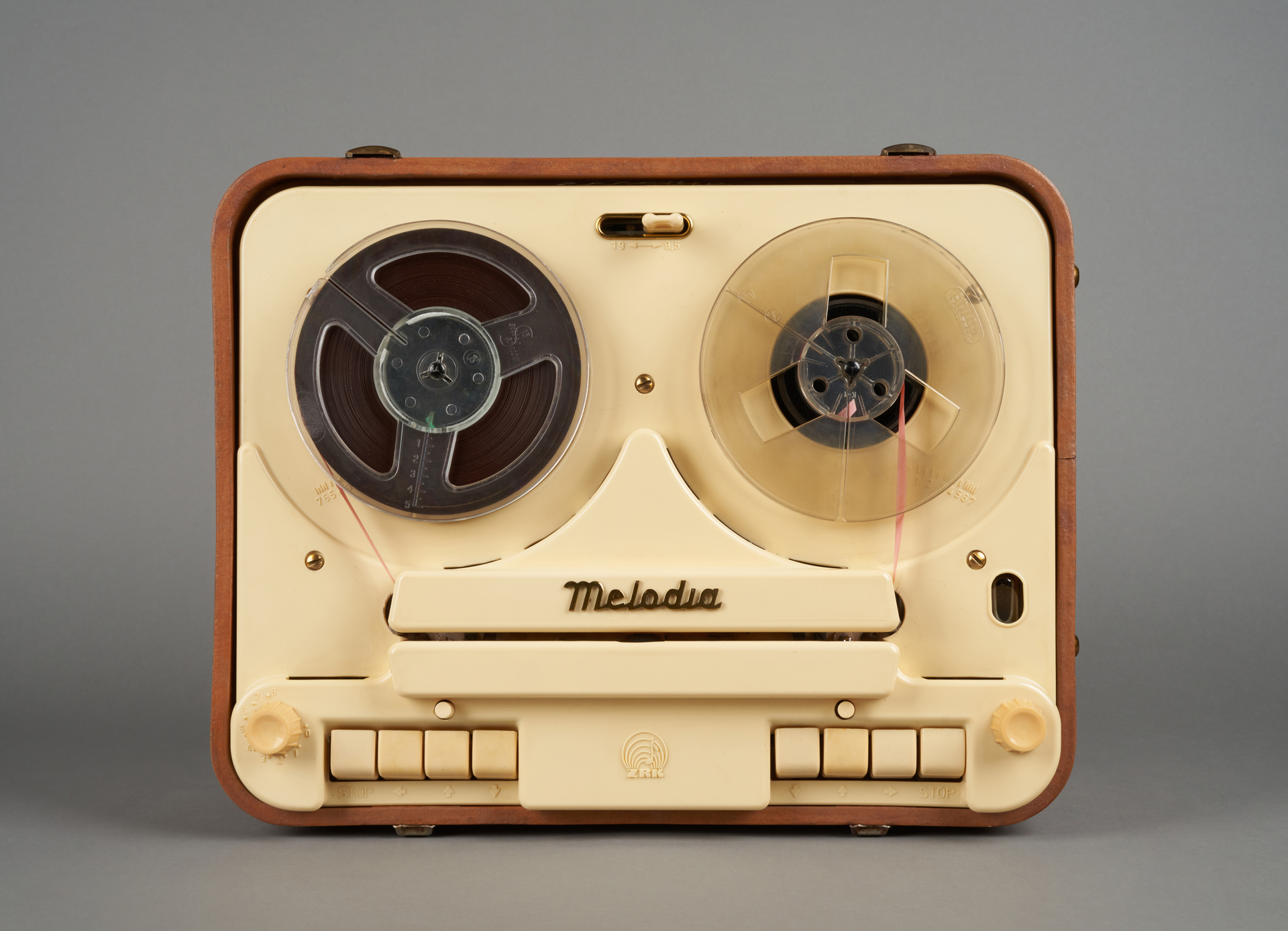
Melodia reel-to-reel tape recorder
Zakłady Radiowe im. Marcina Kasprzaka, / 1961Creator
Zakłady Radiowe im. Marcina Kasprzaka
Time and place of creation
Time:
1961
Place:
Poland
The Melodia is the first reel-to-reel tape recorder manufactured in Poland. It was developed by a team of employees of Zakłady Radiowe im. Marcina Kasprzaka in Warsaw, headed by mgr inż. R. Patyra. The device was created in 1958.
The Melodia is a mains-powered portable device, with an electrical system based on vacuum tubes. Thanks to the numerous input sockets, the tape recorder enables connection of a microphone, gramophone, or radio receiver that provide the source of the recorded sound. Two separate sets of half-track heads allow two-track mono recording of the sound, with maximum recording durations of 2×30 or 2×60 minutes (depending on the magnetic tape used). Recording and playback of sound is possible in both tape directions without the need to turn the reels around (making it a system similar to the auto-reverse mechanism). The drive mechanism allows tape movement at a linear speed of 9.5 or 19 cm/s. An electron-ray tube tuning indicator enables control of the recording process quality. In the top panel of the tape recorder there are two symmetrically placed rows of button switches used for controlling tape movement. The Tonsil magnetic and electric speaker, installed inside the wooden housing, is upholstered with a maroon and dark orange leatherette and allows playback of recordings. According to the manufacturer’s instructions, the tape recorder was intended primarily for “social users, e.g. schools, theatres, radio stations and similar, as well as individual customers”. The choice of these target consumers seems to justify what was, at the time, an astronomical price – 6,000 zlotys, with the average monthly salary in 1958 being 1,348 zlotys.
The tape recorder’s smooth operation, i.e., the even movement of tape on both reels, is ensured by the built-in Tonsil SS-60 motor, which was designed for the purpose of the Melodia. It is a synchronous motor with a cylindrical design in which a copper winding of three strands (stator) generates a rotating magnetic field that moves the rotor inside when supplied with power. Thanks to this design, the rotation speeds of the magnetic field and rotor are identical. The mechanism uses the hysteresis phenomenon, described in 1890 by the Scottish physicist James Freddie Ewing, which involves the dependency of the current state of properties of body excited by external factor on states at moments preceding the excitement, which involves a delay of the reaction to the external factor.
Author: Filip Wróblewski
Melodia reel-to-reel tape recorder
Zakłady Radiowe im. Marcina Kasprzaka, / 1961Creator
Zakłady Radiowe im. Marcina Kasprzaka
Time and place of creation
Time:
1961
Place:
Poland











